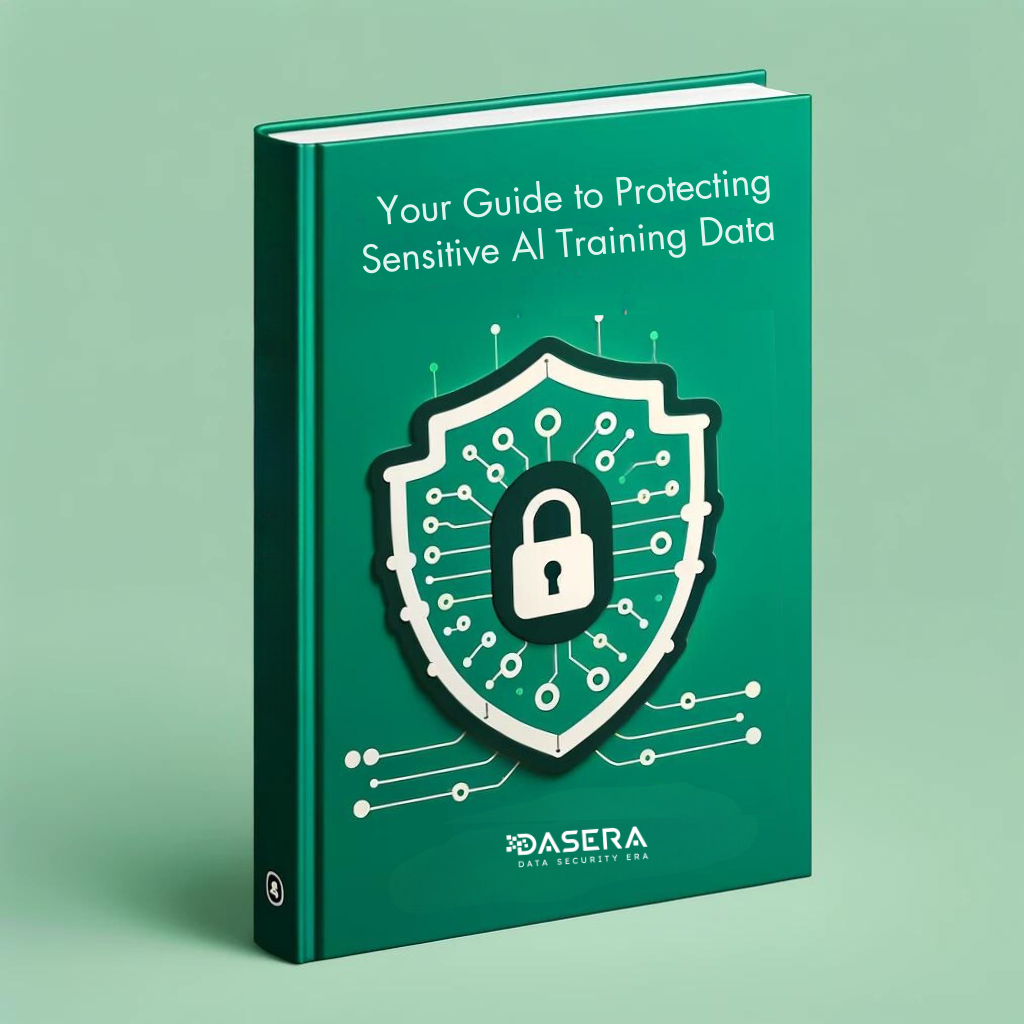
Artificial intelligence (AI) is evolving how organizations manage their operations and deliver products and services, transforming industries across the globe. As more and more companies embrace AI to meet their needs, they increasingly rely on vast volumes of rich, sensitive data to train and inform AI models. Protecting this valuable and sensitive AI training data has become a critical concern, mainly as ever-evolving cybersecurity threats and regulations create new challenges for organizations.
This article will review the importance of automating data security and governance for AI training data and explore practical strategies and measures organizations can take to protect this crucial information. We will focus on the capabilities of Dasera's data security posture management (DSPM) platform, which aids organizations in finding, identifying, categorizing, and overseeing AI training data to ensure its protection throughout its lifecycle, from creation and storage to utilization and deletion.
Data Security Concerns and Challenges in AI-Based Applications
Organizations that leverage AI-based applications face several data security concerns and challenges, including:
- Data Leakage: As valuable AI training data is used, shared, and stored throughout the enterprise, there is an increased risk of accidental or intentional data leaks, which can result in intellectual property theft or loss of competitive advantage.
- Model Inversion Attacks: By analyzing an AI model's input and output data, cybercriminals can generate counterfeit training data and reconstruct the original input information, potentially leading to data breaches and privacy violations.
- Legal and Regulatory Compliance: Ensuring compliance with numerous data security and privacy regulations, such as the General Data Protection Regulation (GDPR) and the California Consumer Privacy Act (CCPA), can be challenging due to the regulations' complexity and evolving nature.
- Insufficient Security Measures: Maintaining security controls that adequately address AI-specific threats and vulnerabilities requires ongoing attention and expertise, which may be lacking in some organizations.
Best Practices for Protecting AI Training Data and Ensuring Data Security
Organizations can incorporate the following best practices to safeguard AI training data and ensure data security in their AI-based applications:
- Secure Data Storage and Transmission: Implement robust encryption techniques to protect AI training data stored in databases, file systems, or cloud environments and ensure secure transmission during data-sharing processes.
- Regular Audits and Risk Assessments: Conduct routine assessments to identify potential risks, vulnerabilities, and non-compliance issues in AI-based applications and address them proactively.
- Defense-in-Depth Approach: Adopt a multi-layered security strategy incorporating perimeter security controls, network segmentation, advanced threat detection, and data loss prevention measures to protect AI training data from various attack vectors.
- Security and Privacy by Design: Integrate data security and privacy considerations into the development and deployment process of AI-based applications, ensuring security controls are in place.
Dasera's Role in Safeguarding AI Training Data and Enhancing Data Security
Dasera's data security platform offers a comprehensive solution for effectively protecting AI training data and managing data security in AI-based applications:
- Data Discovery and Classification: Dasera automatically identifies and classifies sensitive AI training data, enabling organizations to maintain complete visibility of their data landscape and implement security controls based on the sensitivity of their data.
- Automated Policy Enforcement: The platform allows organizations to define and enforce data access and usage policies consistently and automatically, simplifying compliance with data privacy regulations.
- Continuous Monitoring and Anomaly Detection: By monitoring AI training data usage patterns and detecting anomalous activity, Dasera's platform helps organizations identify and address potential security risks in real-time.
- Integration with Existing Security Infrastructure: Dasera can seamlessly integrate with existing data security and governance tools, ensuring alignment with an organization's overall data protection strategy.
Additional Benefits of Implementing Dasera for AI Training Data Security
In addition to its core capabilities, Dasera's platform offers a range of benefits for organizations that use AI-based applications:
- Improved Regulatory Compliance: By automating essential aspects of data security and governance, Dasera helps organizations maintain compliance with various data protection regulations, reducing the risk of costly non-compliance penalties and reputational damage.
- Scalability: Designed for scalability, Dasera's platform accommodates organizations' growing data security and governance needs as they expand their AI capabilities and develop new applications.
- Operational Efficiency: By automating manual tasks such as data discovery, classification, and policy enforcement, Dasera saves time and resources while reducing errors and enhancing overall operational efficiency.
As AI-based applications become more prevalent, ensuring the security of AI training data and maintaining robust data security and governance practices are crucial to an organization's overall data protection strategy. By implementing best practices and utilizing Dasera's data security platform, organizations can effectively mitigate risks, maintain compliance with data privacy regulations, and safeguard the sensitive information that fuels the AI models driving their business growth. For more information on protecting your organization’s AI data, read our latest white paper: “Data Security in AI: Protecting Against Emerging Risks.”









